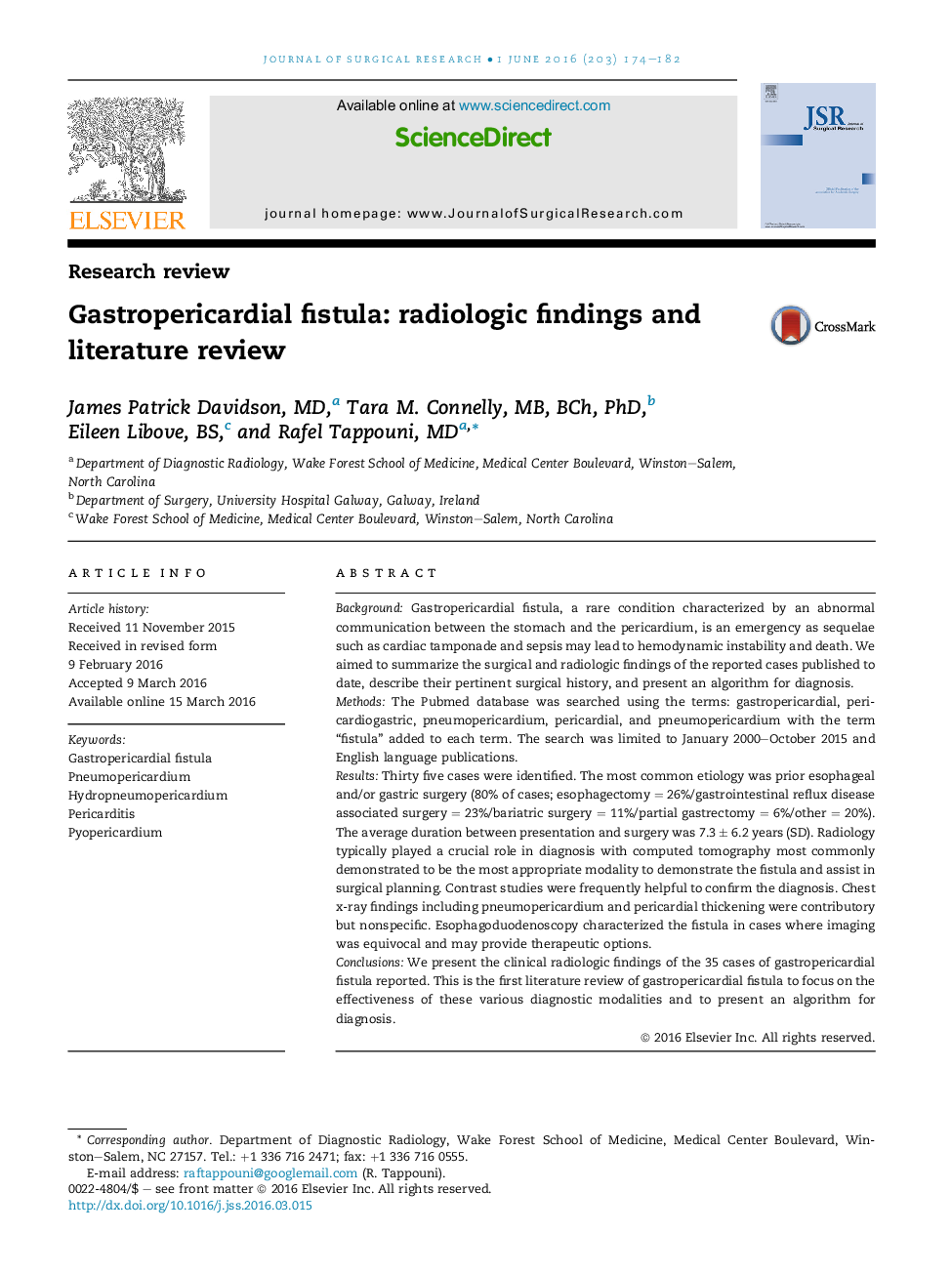| Article ID | Journal | Published Year | Pages | File Type |
|---|---|---|---|---|
| 4299203 | Journal of Surgical Research | 2016 | 9 Pages |
BackgroundGastropericardial fistula, a rare condition characterized by an abnormal communication between the stomach and the pericardium, is an emergency as sequelae such as cardiac tamponade and sepsis may lead to hemodynamic instability and death. We aimed to summarize the surgical and radiologic findings of the reported cases published to date, describe their pertinent surgical history, and present an algorithm for diagnosis.MethodsThe Pubmed database was searched using the terms: gastropericardial, pericardiogastric, pneumopericardium, pericardial, and pneumopericardium with the term “fistula” added to each term. The search was limited to January 2000–October 2015 and English language publications.ResultsThirty five cases were identified. The most common etiology was prior esophageal and/or gastric surgery (80% of cases; esophagectomy = 26%/gastrointestinal reflux disease associated surgery = 23%/bariatric surgery = 11%/partial gastrectomy = 6%/other = 20%). The average duration between presentation and surgery was 7.3 ± 6.2 years (SD). Radiology typically played a crucial role in diagnosis with computed tomography most commonly demonstrated to be the most appropriate modality to demonstrate the fistula and assist in surgical planning. Contrast studies were frequently helpful to confirm the diagnosis. Chest x-ray findings including pneumopericardium and pericardial thickening were contributory but nonspecific. Esophagoduodenoscopy characterized the fistula in cases where imaging was equivocal and may provide therapeutic options.ConclusionsWe present the clinical radiologic findings of the 35 cases of gastropericardial fistula reported. This is the first literature review of gastropericardial fistula to focus on the effectiveness of these various diagnostic modalities and to present an algorithm for diagnosis.
